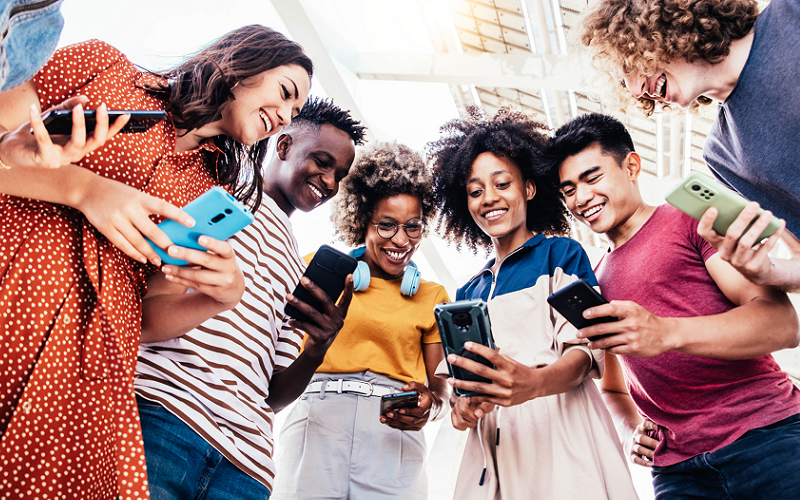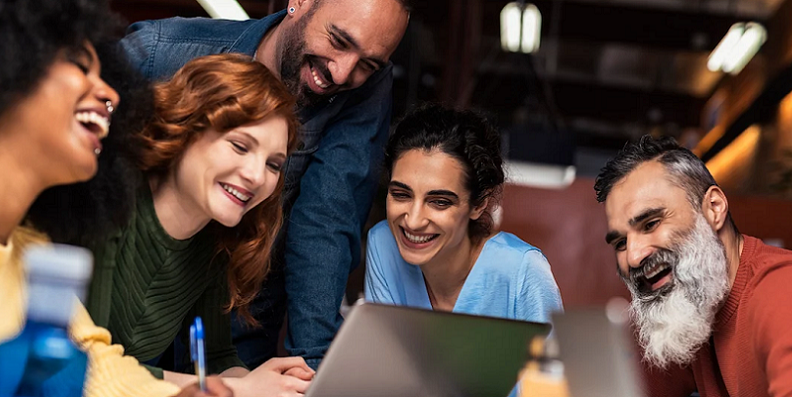
In today’s interconnected world, the concept of cultural diversity has expanded far beyond geographical boundaries, thanks in large part to the pervasive influence of social media. These digital platforms have become pivotal in sharing, celebrating, and understanding the rich tapestry of global cultures. As we navigate through an era where our virtual and physical worlds intertwine, social media stands as a powerful tool that can either bridge cultural gaps or widen them.
Contents
Historical Context of Cultural Diversity
Understanding the role of social media in promoting cultural diversity requires a foundational knowledge of what cultural diversity has meant through the ages. The concept isn’t new; it has been evolving with human societies over centuries.
Definition of Cultural Diversity in Historical Perspective
Cultural diversity, fundamentally, refers to the variety of human societies and cultures in a specific region, or in the world as a whole. Historically, it was shaped by geographical separations, leading to distinct languages, traditions, beliefs, and lifestyles. This diversity was further influenced by factors such as migrations, conquests, trade, and more recently, globalization. Each era added layers to cultural diversity, making it a complex and dynamic tapestry of human existence.
Evolution of Cultural Diversity Over Time
The evolution of cultural diversity is a testament to human adaptability and interaction. Ancient civilizations, from the Indus Valley to Mesopotamia, and from Egypt to the Americas, developed unique cultures that still impact the modern world. The Silk Road, for instance, was not just a trade route but a conduit for cultural exchange, spreading ideas, art, religion, and technology across continents.
In the Middle Ages, cultural diversity took on new dimensions with the spread of empires and the movement of populations. The Renaissance period further sparked a cultural awakening across Europe, influenced heavily by interactions with other parts of the world.
The Age of Exploration and subsequent colonialism had a profound impact on cultural diversity. While it led to the unfortunate erasure and suppression of many cultures, it also resulted in an unprecedented blending of cultures across continents.
In the modern era, cultural diversity has been influenced by waves of immigration, urbanization, and globalization. The 20th century, in particular, saw an acceleration in the exchange of cultural practices and ideas, facilitated by advancements in travel and communication technologies.
The Rise of Social Media
The phenomenon of social media, a relatively recent development in the grand tapestry of human communication, has dramatically altered how we interact, share information, and understand the world. To fully grasp its impact on cultural diversity, it is essential to explore the ascent of these digital platforms.
Brief History of Social Media Platforms
Social media’s roots can be traced back to the early days of the internet, where online forums and chat rooms provided the first taste of virtual community building. However, the landscape began to change significantly in the early 2000s with the advent of platforms like MySpace and LinkedIn, which introduced more personalized and interactive ways to connect online.
The launch of Facebook in 2004 marked a turning point, offering an unprecedented level of connectivity and user engagement. This was quickly followed by other platforms like Twitter, Instagram, and YouTube, each contributing uniquely to the social media ecosystem. These platforms were not just about connecting friends; they became channels for sharing news, promoting causes, and, crucially, celebrating and disseminating cultural content [1].
The Global Reach of Social Media
The global expansion of social media has been nothing short of extraordinary. Platforms like Facebook and WhatsApp have billions of users across the world, transcending geographical, linguistic, and cultural boundaries. This global network has turned social media into a powerful tool for cross-cultural communication and learning.
In countries around the world, social media has become a part of daily life, influencing everything from politics and education to entertainment and social norms. The ease with which individuals can share their experiences and cultural heritage with a worldwide audience has made these platforms a unique melting pot of cultures.

Social Media as a Tool for Cultural Exchange
With its unparalleled reach and accessibility, social media has emerged as a vital conduit for cultural exchange in the modern world.
Sharing of Cultural Practices and Traditions on Social Platforms
Social media platforms are like digital canvases, offering individuals and communities the opportunity to showcase their cultural practices and traditions. From Instagram posts displaying traditional cuisines to YouTube channels dedicated to teaching ethnic dance forms, social media allows for a rich and vibrant exhibition of cultural heritage.
These platforms enable individuals to narrate their cultural stories, share traditional music, art, and literature, and even broadcast live cultural events, making them accessible to a global audience. The ease and immediacy with which this content can be shared have helped in bringing lesser-known or underrepresented cultures to the forefront, fostering a greater appreciation and understanding among diverse audiences [2].
Case Studies: Successful Cultural Exchanges via Social Media
Several case studies highlight the effectiveness of social media in promoting cultural exchange. For instance, TikTok’s #TikTokCooks challenge saw users from around the world sharing their traditional family recipes, creating a global culinary exchange that transcended language barriers.
Another example is the #BlackLivesMatter movement, which, though rooted in addressing racial injustice in the United States, found resonance across the globe through social media. It sparked conversations about race, equality, and shared struggles, leading to a broader cultural understanding and solidarity.
Furthermore, artists and musicians have used platforms like Instagram and SoundCloud to share their work, often drawing on their cultural backgrounds. This has not only given them international exposure but also allowed audiences to experience a wide range of cultural expressions.
Overcoming Cultural Barriers through Social Media
Social media’s impact extends beyond mere sharing of cultural content; it plays a crucial role in bridging cultural divides. In this digital age, these platforms are instrumental in breaking down barriers that have historically separated societies and cultures.
Breaking Stereotypes and Misconceptions
One of the most significant ways social media helps in overcoming cultural barriers is by challenging stereotypes and misconceptions. With the ease of sharing authentic stories and experiences, individuals and communities can directly counteract the often oversimplified and biased portrayals of their cultures in mainstream media. This direct communication fosters a more nuanced understanding among global audiences.
For example, social media campaigns like #NotYourStereotype have allowed individuals to confront and dispel clichés about their cultures, races, or religions. Such movements encourage users to share personal narratives and images that defy common stereotypes, promoting a more diverse and realistic representation of their cultures [3].
Examples of Social Media Campaigns Promoting Cultural Understanding
Several social media campaigns have successfully promoted cultural understanding and empathy. The #DoSomethingForNothing initiative, started by a hairstylist, encourages people worldwide to help others in need, irrespective of their background, thus promoting a message of universal kindness and community.
Another powerful example is the #MeToo movement, which began as a campaign against sexual harassment and assault. It rapidly gained global momentum, transcending cultural and national boundaries, and highlighted shared experiences among women from diverse cultural backgrounds, fostering a global dialogue about gender-based issues.
Furthermore, UNESCO’s #ShareOurHeritage campaign on platforms like Instagram and Twitter aimed to promote cultural heritage sites worldwide. By sharing photos and stories of these sites, the campaign sought to foster a sense of shared responsibility in preserving the diverse cultural heritages of humanity.

Challenges and Criticisms of Social Media and Cultural Diversity
While social media has been a boon for promoting cultural diversity, it’s not without its challenges and criticisms. Understanding these pitfalls is crucial to harnessing the full potential of these platforms for positive cultural exchange.
Misrepresentation and Oversimplification of Cultures
One significant challenge is the tendency for social media content to misrepresent or oversimplify complex cultural realities. The nature of these platforms, which often favor brief, attention-grabbing content, can lead to the dissemination of stereotypes or superficial portrayals of cultures. For instance, viral trends or memes may inadvertently perpetuate cultural clichés or reduce rich traditions to simplistic caricatures.
Additionally, there’s a risk of cultural appropriation, where elements of a culture are used outside of their original context, often by those who do not understand or respect the cultural significance behind them. This can lead to offense and misunderstanding, undermining the goal of authentic cultural exchange [4].
The Role of Algorithms in Echo Chambers and Cultural Isolation
Another critical challenge is the role of algorithms in creating echo chambers. Social media platforms often use algorithms to show users content that aligns with their existing beliefs and interests. While this can help tailor the user experience, it also risks isolating users in cultural bubbles, limiting exposure to diverse perspectives and experiences.
These algorithms can inadvertently reinforce cultural biases, limiting the opportunity for users to encounter and engage with different cultures. The lack of exposure to diverse viewpoints not only hampers cultural understanding but also perpetuates divisions and misunderstandings.
Strategies for Promoting Cultural Diversity on Social Media
In light of the challenges, it becomes essential to devise strategies that can effectively promote and maintain cultural diversity on social media. These strategies involve actions by individuals, content creators, and the platforms themselves to create a more inclusive and diverse digital environment.
Encouraging Inclusive and Diverse Content Creation
The first step towards promoting cultural diversity is encouraging the creation and sharing of inclusive and diverse content. Content creators play a vital role in this by showcasing a wide range of cultural experiences and perspectives. This can be achieved by:
- Collaborating with creators from different cultural backgrounds.
- Featuring stories and content that highlight lesser-known cultures and traditions.
- Using their platforms to challenge stereotypes and promote understanding.
Users can contribute by actively seeking out and engaging with content that broadens their cultural horizons. Supporting creators who represent different cultures and sharing their content can help amplify diverse voices [5].
Role of Influencers and Celebrities in Spreading Cultural Awareness
Influencers and celebrities, with their large followings, can be powerful allies in promoting cultural diversity. They can:
- Use their platform to bring attention to cultural issues and events.
- Partner with cultural organizations to raise awareness about various cultures.
- Share their own cultural experiences and learnings to inspire their followers.
Their involvement can have a significant impact due to their reach and ability to influence public opinion and trends.
Policies and Measures by Social Media Platforms to Enhance Diversity
Finally, social media platforms themselves have a critical role to play. They can:
- Adjust algorithms to expose users to more diverse content.
- Create policies that discourage cultural misrepresentation and promote respectful engagement.
- Highlight and promote diverse content through features like dedicated sections or hashtags.
Platforms can also provide resources and tools to educate users about cultural diversity and the importance of respectful representation and interaction.
References
[1] The Intertwining of Social Media and Cultural Diversity
[2] Social Media as a Means to Diversity
[3] Social Media’s Role in Connecting & Promoting Culture
[4] The Impact of New Social Media on Intercultural Adaptation
[5] Social media plays a key role in promoting a diversity of voices
